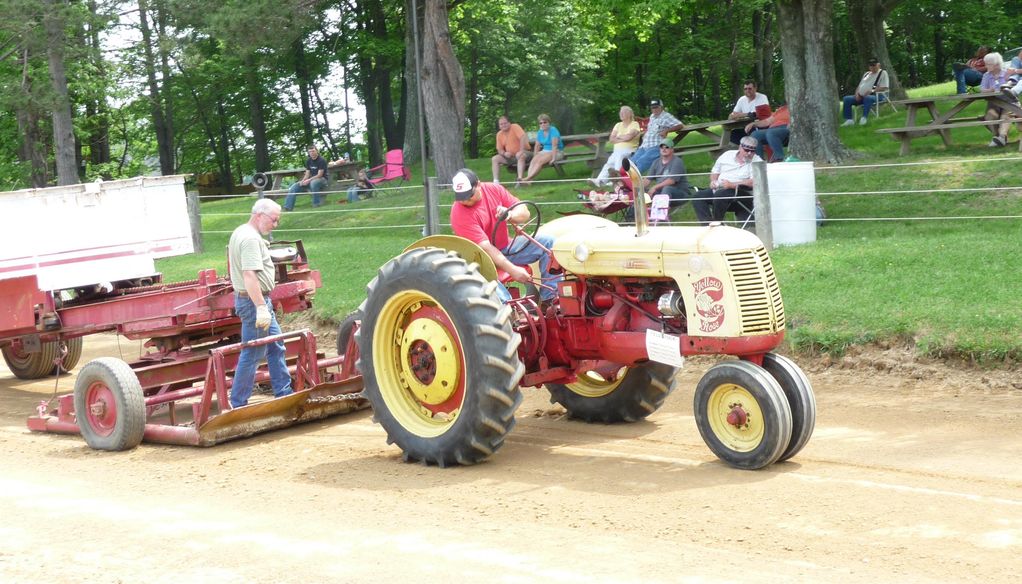Cockshutt Plow Company: From Wikipedia, the free encyclopedia
Cockshutt was a large tractor and machinery manufacturer, known as Cockshutt Farm Equipment Limited (1957-1962), based in Brantford, Ontario, Canada.
Originally funded as the Brantford Plow Works by James G. Cockshutt in 1877, the name was changed to the Cockshutt Plow Company when it was incorporated in 1882. After James died shortly thereafter, his brother William Foster Cockshutt took over as president. He remained until 1888, when another brother, Frank Cockshutt, became president of the company. In 1910, Henry Cockshutt, the youngest of the brothers, took over the leadership of the company. Under his direction, the company was able to obtain financing for acquisitions and expansion.
Known for quality designs, the company became the leader in the tillage tools sector by the 1920x.
HISTORY:
Since Cockshutt did not have a tractor design of its own yet, in 1929 an arrangement was made to distribute Allis-Chalmers and United tractors (United was a group of Fordson dealers who contracted Allis for a new tractor, once Ford stopped North American production of the Fordson). In 1935 Cockshutt took on the Oliver tractor line.
During the war years Cockshutt was able to design its own tractor. This tractor was the Cockshutt Model 30 tractor. However, because the raw materials needed for industrial production were restricted only fro use in the war effort, production of the Model 30 30hp 2-3 plow tractor had to be postponed until the end of the war. The Model 30 finally went into production in 1946. Canada Post commemorated the 50th anniversary of the Model 30's launch with a postage stamp on June 8, 1996. Only 441 Model 30s were manufactured that first year. In 1947, production of the Model 30 hit its full stride when 6,263 were built. Thus, the Model 30 was the first modern production tractor built in Canada. The high water mark of production of the Model 30 was reached in 1948 when 101,665 tractors were made and marketed across Canada.
Following introduction of the Model 30, Cockshutt added the larger 45hp, 3-4 plow Model 40 in 1949 and added the smaller 25hp 2-plow Model 20 in 1952 and finally in 1953 the company added the still larger 60hp 4-5 plow Model 50 to the emerging line of Cockshutt farm tractors. The Cockshutt Blackhawk 35 was introduced in 1956 to promote the acquisition of the Ohio Cultivator Company.
In 1958, Cockshutt introduced a complete new line of tractors at the same time: the 540, 550, 560 and 570. The sheet metal of the 500 series was designed by Raymond Loewy, a well known automobile designer of the era. The design set a new standard in modern styling .
In 1958, the company ownership was taken over by English Transcontinental, a British mercantile bank buying on behalf of an American investment group that became the forerunner of White. The Company name was changed to Cockshutt Farm Equipment Limited, and was acquired by White Motor Company in January 1962. White had previously acquired Oliver Corporation in late 1960 and subsequently bought Minneapolis-Moline in early 1963.
Immediately after assuming control in early 1962, White opted to cease production in Brantford, but to take advantage of Cockshutt's eight decades of brand loyalty, they continued to sell Cockshutt tractors. Manufactured during the 1964-1969 period, the **50 series from 1450 tto 2150 were identical to Oliver tractors of the same model number. They were manufactured at the Oliver plant in Charles City, Iowa, and differed from Olivers only in paint color and bearing the new Cockshutt logo. They covered the horsepower range 55 to 110, essentially the same as the Cockshutt Models 560, 570, and 580. After acquiring Minneapolis-Moline, White began selling the MM Jet Star 3 as a Cockshutt 1350, a 45 horsepower tractor filling the Cockshutt Model 550 spot. Ultimately, White also offered a diesel import manufactured by Fiat as a Cockshutt: the 40hp Model 1265 a 3-cylinder unit replacing the Cockshutt Model 540.
White established White Farm Equipment in 1969 to merge and further consolidate the three acquisitions and by 1975 had discontinued all three of the previous brand names and began offering White equipment, distinguished by its primarily silver paint job. The Cockshutt name was no longer used beyond the mid-70s.
